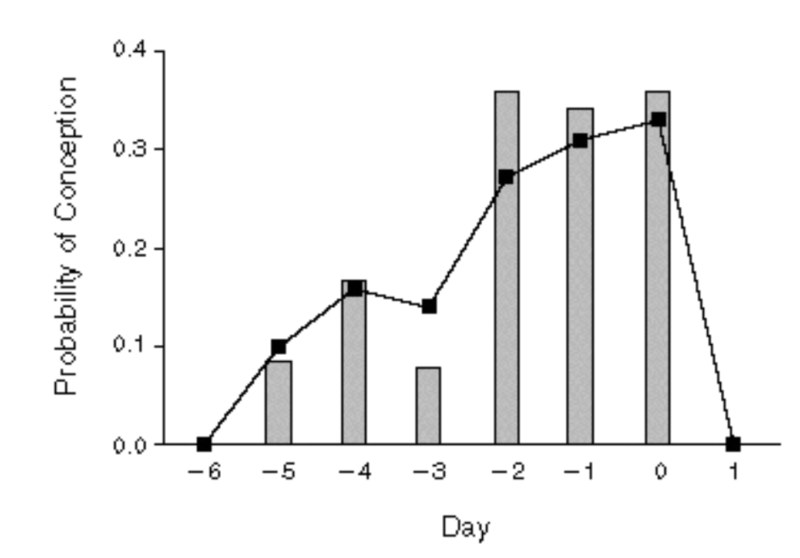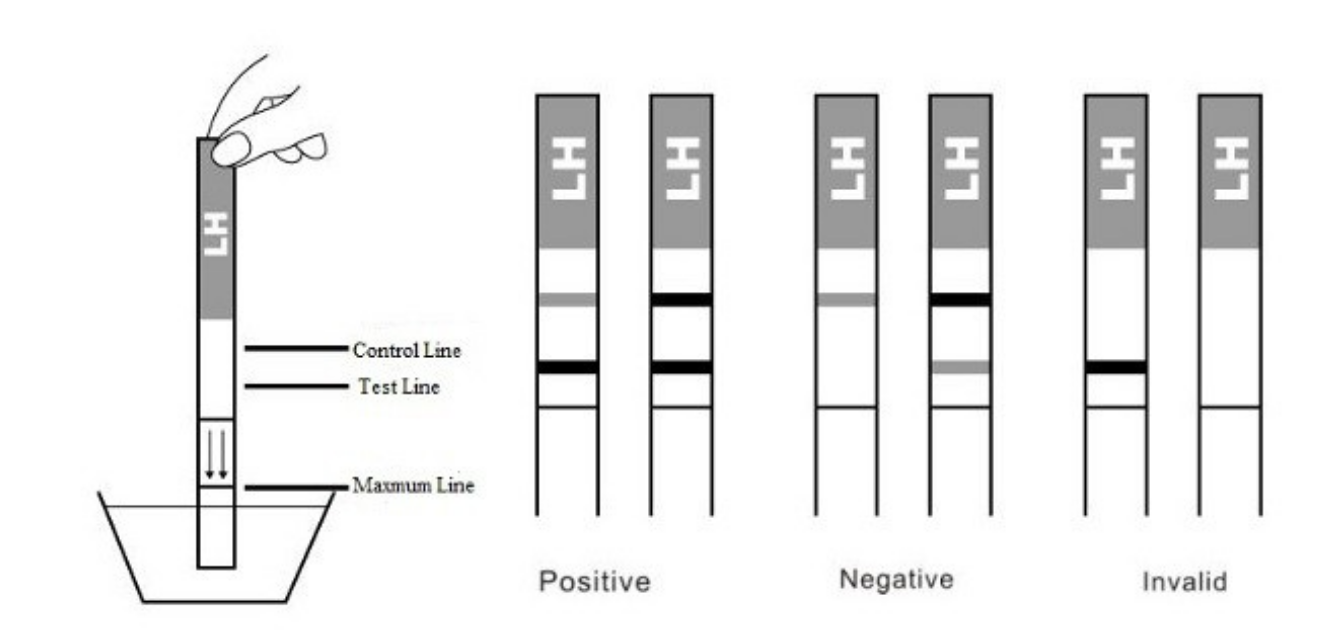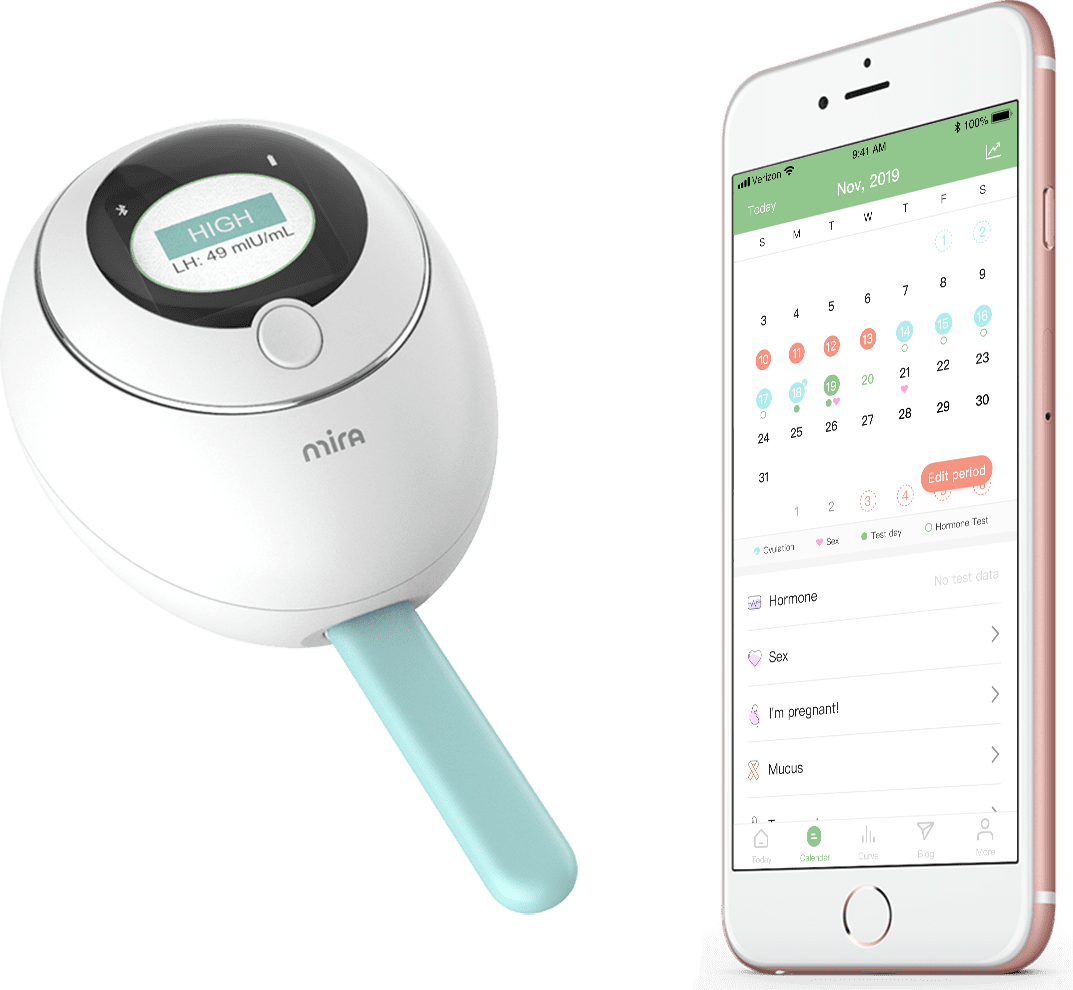Does Two Lines on an Ovulation Test Mean Im Pregnant
When trying to conceive (TTC), pinpointing the day of ovulation is of the utmost importance. After all, ovulation is short, lasting only 12 to 24 hours. It's critical not to miss the days leading up to ovulation and the day of ovulation itself (collectively known as your fertile window) so that you do not miss your best opportunity to conceive.

Knowing the day you will ovulate maximizes your chances of getting pregnant and gives you more control over the process of conception. But ovulation test kits may be difficult to understand –and even more confusing to interpret. The lines may be faint, you may be unsure of how to use the kit properly, or you might not get a positive result no matter how many times you test (more on what a positive ovulation test looks like here).
Wondering how to read an ovulation test? Our guide will explain how to understand your test kit — and how to know that the test results are accurate.
What is an ovulation test kit?
Ovulation test kits, or ovulation predictor kits (OPKs), determine when you are ovulating by measuring the hormone levels in your urine.
Ovulation is tightly controlled by luteinizing hormone (LH). LH levels remain steady throughout most of the menstrual cycle but surge dramatically 24 to 36 hours before ovulation. After ovulation, they return to normal.
You can identify when you are about to ovulate by pinpointing your LH surge. This is how OPKs work. They measure LH levels in your urine and compare them with a threshold to tell you if you are likely to ovulate soon.
OPKs work similarly to pregnancy tests in that they have two lines that form after immersing the test stick in urine:
The first line is the control line. It tells you if the kit is working. If the control line does not appear, you should retest with a new OPK.
The second line is the test line. When it detects an LH surge, the second line changes to similar darkness or darker than the control line. If the second line does not appear, it means the test did not detect the LH surge that signifies you are about to ovulate (read more on what it means to have no LH surge).
How does an ovulation test work?
The OPK works by testing the LH levels in your urine, to determine if you are ovulating.

Once the ovary releases an egg, the egg has only 12 – 24 hours of lifespan to be fertilized by sperm. These 12 – 24 hours are your most fertile time of the menstrual cycle (read our guide to ovulating twice or hyperovulation).
It is also the best time to have intercourse to maximize your chance of conceiving. According to the New England Journal of Medicine, the chance of pregnancy right at 24 hours past ovulation is zero.
The good news is that sperm can survive up to five days in the woman's reproductive tract. For this reason, your fertile window consists of the five days leading to ovulation and the day of ovulation. You are most likely to get pregnant if you have sex in the two days prior to ovulation or on the day of ovulation.
Because LH levels are not high enough during the first three days of your fertile window, OPKs are only able to identify up to two days before ovulation. For this reason, many people start testing when approaching the fertile window, so they do not miss their most fertile days.
Types of ovulation tests & how to read them
Urine-based ovulation prediction kits
Urine-based kits detect the LH surge before the release of an egg. Like a pregnancy test, the OPK consists of a test wand inserted into the stream of urine. You can collect your urine in a clear cup or urinate on the stick directly.
How to read the results (and what they mean)

OPKs consist of test strips or sticks inserted into the urine stream or a clear cup of urine. When inserted into the urine, a control line will appear. If the control line does not appear, you should take a second test using a new test strip.
When LH exceeds a certain threshold, a second line that is as dark as or darker than the control line will appear to indicate that you will ovulate in 24 to 36 hours. A line that is lighter than the control line or not present indicates that LH is too low to suggest ovulation. If you begin testing several days before ovulation, you should be able to see the lines get progressively darker as you approach your LH surge.
Here's a quick guide to what each test result means:
- One solid line: Compare your test strip with the directions in your OPK to see if the solid line that appeared is the control line or the test line. If the solid line is the control line, it means that your test has worked, but the test did not detect an LH surge. Therefore, you are not ovulating. However, if the solid line is the test line, it means a control line did not appear and your test is invalid. You should take another test.
- Two solid lines: Two solid lines means that both the control line and the test line have darkened. If the test line is as dark as or darker than the control line, this means the test has detected an LH surge. You can expect to ovulate within 24 to 36 hours. If you are TTC, you should start having sexual intercourse now.
- One faint line: If the faint line that appears is the control line and the test line is absent, your test has not detected an LH surge and you are not ovulating. If the faint line that appears is the test line and the control line is absent, your test has not worked and you should take a new one.
- No lines: Whenever there is no control line present, your ovulation test has not worked properly. Therefore, if there are no lines present, it does not mean you are not ovulating — it means that your test hasn't worked right. You should take another ovulation test to get an accurate reading.
Pros
- Many women believe they are easier to use than taking basal body temperature (BBT) in the morning. You don't have to remember to keep a thermometer on your nightstand. You don't need to worry about waking up at night affecting the temperature readings.
- They are more effective than the BBT method. It can be a problem to accurately read the result of BBT. The 0.5 Fahrenheit is a rather small difference between fertile and non-fertile days.
- Moreover, BBT increases after ovulation happens. It captures your last 12 hours of the fertile window out of the 5 – 6 fertile days per cycle. If used properly, BBT confirms ovulation but doesn't predict ovulation.
- Ovulation test kits don't need to be used right after you wake up. Morning urine is recommended by many brands. But you don't have to test with morning urine if you limit fluid intake for at least 2 hours before the test.
- Ovulation test kits are more comfortable to use than checking your cervical mucus. It can take time to learn how to read your cervical mucus.
Cons
- The tests can give you false-positive or false-negative results. LH levels can differ greatly from woman to woman and cycle to cycle. If your LH surge is too low to be detected by your OPK, or if your LH level fluctuates throughout your cycle, you may end up missing your fertile window.
- Some people have trouble reading the test results. You are not alone. The second line is often difficult to interpret. It can be hard to tell if the second line is dark enough to count as a positive result.
- The test result can vary between OPKs. Different brands and lots can have slightly different colors. The darkness of the line in one kit doesn't necessarily apply to the other kits.
- Ovulation test kits may not work for women with polycystic ovarian syndrome (PCOS) or women who have an irregular cycle. Both are associated with irregular and unique hormone patterns. Ovulation test kits can't adapt to these variations.
Fertility Monitors
Fertility monitors are electronic devices that track ovulation digitally. They are used to predict ovulation and detect peak fertility time. They are usually more expensive but easier to use and interpret than ovulation test kits. The device records your testing results and helps to identify ovulation.
There are two kinds of fertility monitors on the market: the traditional type and the advanced type, such as the Mira fertility tracker.
Traditional fertility monitors determine your ovulation based on a fixed threshold, which is usually the population average. This can still lead to a missed LH surge or false-positive results. Mira solves this problem by measuring your actual hormone concentrations and making predictions based on your unique hormone data. You are unlikely to miss an LH surge, even if you have variable menstrual cycles.
Both types of fertility monitors work similarly to OPKs in that they use test sticks or strips inserted into the urine to measure your hormone levels. However, unlike OPKs, you don't have to depend on the naked eye to read the results. Instead, the test stick or strip is inserted into a digital device for analyzing.
How to read the results (and what they mean)

Fertility monitors like Mira make your hormone data easy to understand by providing digital results. All digital fertility trackers will provide you with a qualitative result that tells you if your urine LH levels are high or low. If they are high, this indicates that you will likely ovulate in 24 to 36 hours.
However, advanced fertility trackers like Mira go a step further. They provide digital integration with a smartphone app that shows you your unique hormone curve. In addition to letting you know when you are 24 to 36 hours away from ovulation, the hormone curve allows you to see exactly when you can expect to ovulate based on data from your previous cycles.
Pros
- Both traditional and advanced fertility trackers give you a qualitative reading that does not depend on the naked eye to interpret the results. This means no more confusion over faint, dark, or missing lines!
- Both types of fertility monitors will let you know what time you should test, so you don't need to worry about testing too early or too late.
- Advanced fertility trackers like Mira measure exact hormone concentrations. This can allow you to predict your ovulation even if it is irregular or unpredictable.
- Mira has BlueTooth connectivity, which syncs your test results automatically with the Mira app. This makes your results easier to read and understand.
- Mira's smart algorithm learns your unique cycle pattern. The more cycles you track, the more accurately Mira can predict your ovulation. It also dynamically calculates when you should take your next ovulation test, so you don't have to test every day.
Cons
- Traditional fertility monitors do not have app or BlueTooth connectivity. This means they cannot dynamically predict your upcoming menstrual cycle the way that Mira can.
- Digital fertility monitors are more expensive than OPKs. However, over time, they will save you money by allowing you to get pregnant sooner — meaning you do not have to purchase as many test strips or sticks.
- If you have a medically diagnosed fertility problem, detecting ovulation alone may not be enough to help you get pregnant. In this case, neither OPKs or digital fertility monitors can replace medical treatment by a qualified fertility doctor.
Does Two Lines on an Ovulation Test Mean Im Pregnant
Source: https://www.miracare.com/blog/how-to-read-an-ovulation-test/
0 Response to "Does Two Lines on an Ovulation Test Mean Im Pregnant"
Post a Comment